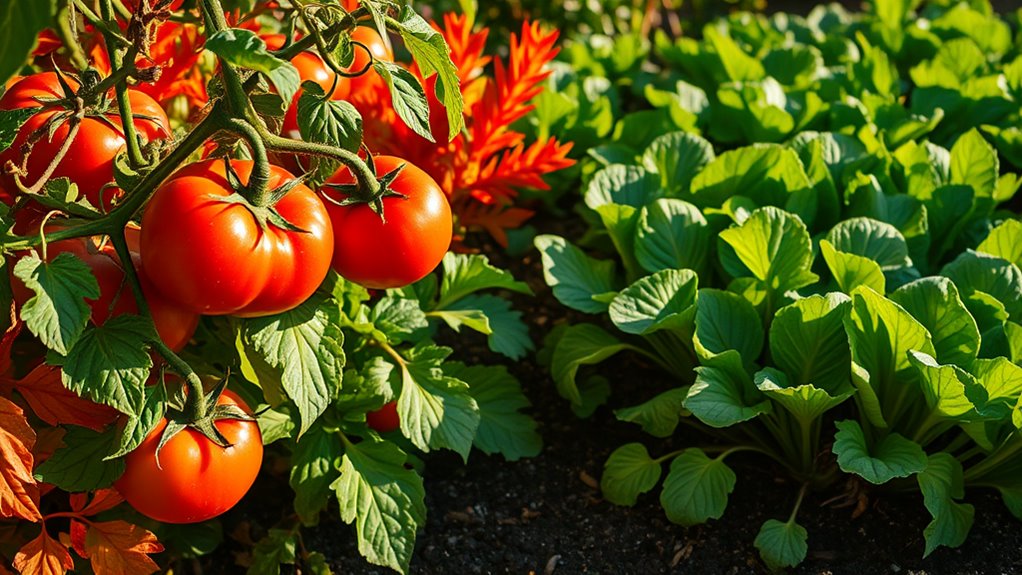This Fall Gardening Trick Extended My Harvest
While the colder months often signal the end of your garden’s bounty, you can actually extend your harvest well into fall. By employing strategies such as row covers and organic soil amendments, you can dramatically improve your results. Many overlook the critical timing for planting tougher crops. Understanding these techniques can change how you view your garden’s potential—but just how effective can these methods truly be in maximizing your autumn yield?
Understanding the Importance of Timing
As the days grow shorter and temperatures begin to drop, you must understand that timing plays a crucial role in the success of your fall gardening endeavors.
Properly syncing planting dates with local frost dates ensures your crops mature before the harsh winter cold arrives.
Monitoring weather patterns and soil temperatures can also maximize growth potential, significantly extending your harvest season in fall gardening. Additionally, choosing the right best crops for each season can greatly enhance your yield as you transition into the fall months.
Choosing the Right Crops for Fall
Crops that thrive in the cooler temperatures of fall can significantly extend your harvest. Selecting the right varieties is crucial for optimal results.
Consider these options:
-
Kale: It becomes sweeter after frost.
-
Brussels Sprouts: They thrive in cooler weather and continue to grow.
-
Carrots: Cold temperatures enhance their flavor.
-
Radishes: Quick to mature, perfect for late-season planting.
These choices ensure a bountiful fall garden. Additionally, experimenting with easiest vegetables can help beginners gain confidence in their gardening skills.
Utilizing Season Extension Tools
While you may think the gardening season ends with the arrival of cold weather, utilizing season extension tools can keep your garden thriving well into the fall. Practices such as using row covers, cold frames, and cloches trap heat and protect plants from frost. These tools create microclimates, allowing you to harvest fresh produce weeks longer than without them, maximizing your garden’s potential. Additionally, optimal planting times can further enhance the effectiveness of these tools in your fall garden.
Soil Preparation for Late Planting
Preparing your soil for late planting can significantly impact your garden’s productivity in the fall months.
Focus on these key strategies:
-
Test soil pH and adjust for optimal nutrient absorption.
-
Add organic matter, like compost, to improve soil structure.
-
Utilize cover crops to protect against erosion and enhance fertility.
-
Ensure proper drainage to prevent root rot during wet fall conditions.
Conducting regular soil testing for nutrients can help track improvements and guide future amendments.
These steps lay a strong foundation for your harvest.
Care and Maintenance During Cooler Months
As the temperatures drop and daylight hours shorten, your garden requires careful attention to thrive through the cooler months.
Monitor soil moisture closely, as cooler air can mask dehydration.
Apply mulch to regulate temperature and retain moisture.
Protect vulnerable plants using row covers or fabric, and ensure you’re pruning any dead foliage to reduce disease risk.
Consistent maintenance now ensures bountiful growth when spring arrives. Additionally, be aware that common composting mistakes can hinder your garden’s health, so educate yourself to avoid them.
Harvesting Techniques for Optimal Yield
To maximize your harvest’s yield, timing and technique are crucial when it comes to picking fruits and vegetables.
Consider employing these strategies:
- Harvest in the early morning for higher moisture levels.
- Use sharp tools to prevent plant damage.
- Pick produce at peak ripeness for optimal flavor and nutrition.
- Regularly check for readiness to ensure you’re gathering at the right moment.
- Utilizing the right essential gardening tools can greatly enhance the efficiency of your harvesting process.

